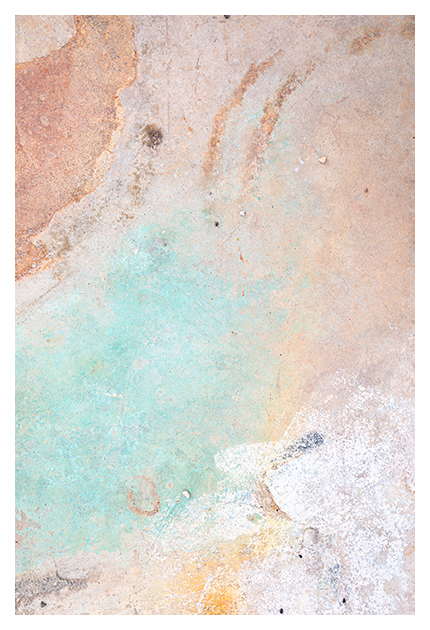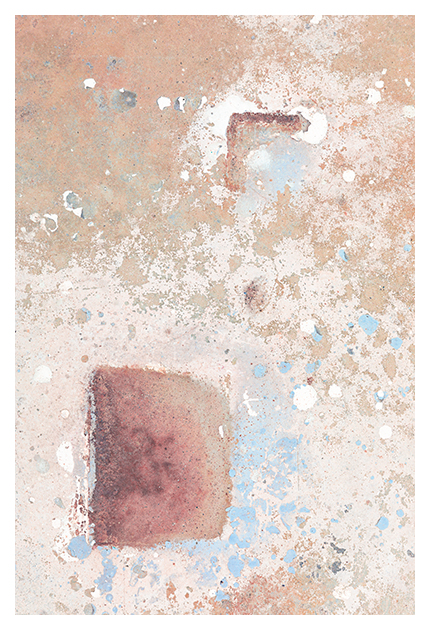"And so, I found myself contemplating the abandoned slab of a razed industrial building like a wandering vessel in a sea of concrete. The surface bore signs of a once-mighty skeleton, sun-bleached stains and cutoff steel in a rusty alphabet soup of jumbled letters I, H, C, L, O and U. Faint visions emerged from the shadows of my unconscious like fleeting apparitions, barely visible in the early morning sun. Or, were they memories? Were they mine? . . . Aha! They spilt forth at last, the conjured visual poetry of Moholy-Nagy, Calder, Albers, Rothko, Godwin, Kandinsky, and Braque! What generous inspiration! The shapes and lines and textures and colors danced before me and it was all I could do to keep up, to not trip over the camera, to capture them before they escaped me—"
In validation of the above testimony the artist does hereby submit the following volume of evidence cataloging select abstract arrays as witnessed and recorded by the artist—whereby, the artist proposes the following:
1) that beauty may be witnessed in unlikely subjects and locations by one who is present and open
2) that artists stand to benefit from exploring subjects and expressions outside of a previously established voice, genre or aesthetic
3) that, despite the camera's capacity for factual recording, there are no rules in art; therefore, any experimentation in craft or process is good for the creative process
4) that, despite an artist's careful intention toward expression, any experience had by the viewer is an equally valid truth, regardless of how it may deviate from the artist's conceived truth
In validation of the above testimony the artist does hereby submit the following volume of evidence cataloging select abstract arrays as witnessed and recorded by the artist—whereby, the artist proposes the following:
1) that beauty may be witnessed in unlikely subjects and locations by one who is present and open
2) that artists stand to benefit from exploring subjects and expressions outside of a previously established voice, genre or aesthetic
3) that, despite the camera's capacity for factual recording, there are no rules in art; therefore, any experimentation in craft or process is good for the creative process
4) that, despite an artist's careful intention toward expression, any experience had by the viewer is an equally valid truth, regardless of how it may deviate from the artist's conceived truth




















